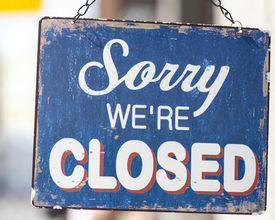Here you are, saying goodbye to your speakers and urging your team to pack up. You can’t wait until everyone is out of the venue so you can set up the last-minute details and then take the next day off.
After all, both you and your team have spent an incredible amount of resources and effort on planning and running the event. Now that it’s over, it’s time to relax and take it easy. You’re ready to turn off the lights and forget about all the stress you’ve been through while putting together this event. We totally get it, but we wouldn’t rush if we were you …
You see, your event shouldn’t end with the closing ceremony or the last attendee leaving the venue. In fact, you won’t be able to call your event a success if people forget all about it as soon as they take off their attendance badge. So instead of focusing all of your attention on the actual event, dedicate some time to figure out your after-event action plan.
Obviously, compared to the overall planning, it shouldn’t take too much time or effort, but you should definitely focus on strengthening and nurturing the relationship you’ve built with your attendees. Here’s a list of things you can do after the event to maximize its impact and harness the connections you’ve created with your guests:
Step 1. Send a segmented follow-up email
Attendees are leads, so it would be wasteful not to deploy a lead-nurturing strategy and deepen that personal connection. Once the event is over, design a follow-up action that is based on the attendee segmentation you’ve initially created. You won’t be sending the same email to a student attendee and an investor attendee, so you’ll want to consider these attendee types when writing follow-up emails.
Next, you’ll want to decide on the message. Obviously, you can send a thank-you message, but that won’t really help you further qualify your attendees as leads. What you’ll have to do is to set up a five-email sequence that will encourage people to take an action, such as downloading an eBook, trying a free demonstration or getting in touch with your sales team. The thing to remember is that you want to personalize the follow-up emails and pack them with value.
Step 2. Tag participants in your social media posts
Another action you can take after the event is to prepare a series of social media posts (either on LinkedIn, Instagram, or Facebook) and tag your attendees. This will engage them with your content and get them interacting with your brand.
For example, you can publish a roundtable presentation on LinkedIn and tag the speaker who delivered the speech, along with a few industry professionals who attended the event. The thing to consider, however, is that the tags must be relevant and coherent. Don’t tag people who have nothing to do with the post, even if they attended the event.
Step 3. Generate post-event content
A strong way to maximize your event’s impact is to create post-event content. This can be long-format posts, in-depth interviews with speakers, podcasts, roundtable videos, etc. Don’t miss this opportunity to create even more value for your audience. Moreover, by generating post-event content, you’ll be able to connect not only with people who attended your event, but also those people who are interested in the subjects discussed during the event, but weren’t able to attend.
Step 4. Publish a post-event call to action
A good way to harness the connection your brand has with your attendees is to offer them a post-event call to action. For example, you can encourage your guests to access a private Facebook community where they could discuss their challenges.
Or you can offer your guests the chance to meet up in small groups with some of your team members to discuss industry-related issues and set up actionable strategies. The secret here is to keep interacting with your attendees after the event.
Step 5. Keep the conversation going
Even if the event is over, you shouldn’t stop communicating with your guests. You can add them on social media, comment on their posts, tag them, or even incentivize them to create their own content by offering to publish their pieces on your platform.
Maintain the relationship and continue serving the community even if the event has been over for a while. This is the best way to make the most of your event’s impact and harness the potential of the connections you made.
Final thoughts
Think about all the effort, money, and time you’ve invested in planning and running the event. It would be economically wasteful and unwise to reduce its impact once it’s over. To maximize the investment you’ve made organizing the event and to increase its impact, you’ll want to communicate with your attendees post-event. Take advantage of every event you plan and strengthen the connections you’ve made with your attendees.






